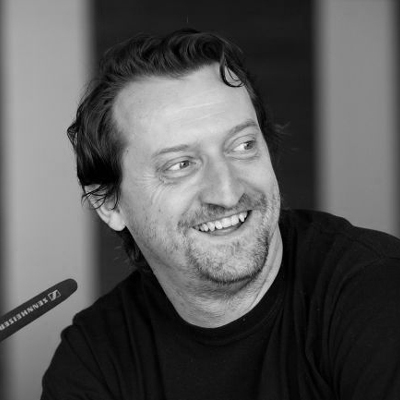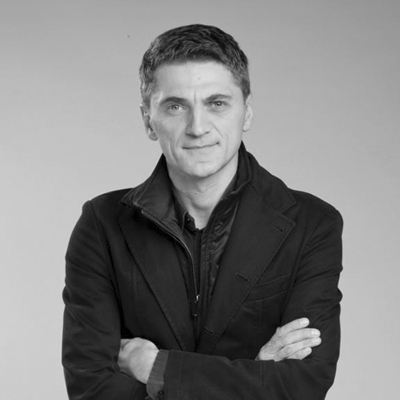
Pred nami je 60. Jazz festival Ljubljana. Letošnji program še posebej odraža bogastvo slovenske glasbene scene, ob tem pa ponuja vznemirljiv izbor mednarodnih umetnikov. Festival je ogledalo značilnosti časa in trenutka, v katerem živimo, pa tudi raznovrstnosti domačega godbenega prizorišča v vseh njegovih odtenkih, tako generacijsko kot po načinu glasbenega izražanja. Lahko zatrdimo, da še nikoli doslej nismo bili priče tako močno razvejanemu glasbenemu dogajanju v Sloveniji s številnimi avtorji in glasbeniki, ki delujejo v širokem polju jazza. Pogumni pristopi in odlične izvedbe so naju prepričali, da mora biti festival prav tako pogumen. Poslanstvo Jazz festivala Ljubljana je zagotoviti prostor novim snovanjem. Želiva, da bi vsi delovali v smeri, da bosta tako letošnja kot jubilejna izvedba festivala prihodnje leto najlepši praznik glasbe za domačo in mednarodno glasbeno skupnost ter številne obiskovalce.
Prvi veliki korak v tej smeri je letošnja ponudba desetih brezplačnih koncertov v Parku Cankarjevega doma. Poudarek je na predstavitvah domačih zasedb in slovenskih glasbenikov kot vodij ali delov mednarodnih zasedb. Poleg tega bo Park prostor še za novi Oder pri starem drevesu, kjer bo z godbenimi vložki posegala mlada, nadobudna generacija glasbenikov, ki v svojem ustvarjanju razmišljajo kreativno. V Parku bo potekalo celodnevno dogajanje, namenjeno tako posameznikom kot družinam. Kot je že običaj, bomo pripravili tudi poseben program za najmlajše.
Prenovljeni koncept festivala je lahko uspešen samo s podporo občinstva. Od samega začetka oblikovanja letošnjega programa sva imela v mislih vaše zadovoljstvo in sloves programsko najbolj drznega festivala v Evropi*. Meniva, da se drznost ne izkazuje samo z imeni uveljavljenih izvajalcev, ampak tudi s spodbujanjem domače ustvarjalnosti, ki lahko zaživi najbolje, kot je mogoče, samo z vašo podporo.
Dobrodošli v neomejeni kozmos kreativnosti in glasbenih užitkov!
30th Ljubljana International Film Festival LIFFE is under the honorary patronage of the President of the Republic of Slovenia Borut Pahor.
News
23. 11. 2019
22. 10. 2019
This year’s 30th Ljubljana International Film Festival –
Liffe, Slovenia’s major film festival, is held under
the honorary patronage of His Excellency Mr Borut Pahor, President of the Republic of Slovenia.

Simon Popek
Programme director
Three Times Ten Years of Liffe
Considering that cinema is declared dead and buried every few years, I cannot but relate to Godard’s elegiac lament commissioned by the British Film Institute (and made together with Anne-Marie Miéville). A documentary marking the centennial anniversary of cinema, Twice Fifty Years of French Cinema roughly divides the hundred-year history of film into two parts: the first fifty years when national film enjoyed considerable reputation, and the ensuing five decades when cinema gave way to American imperialism and not even domestic audiences accorded it due recognition. At a hotel restaurant, the director engages in a discussion with his friend Michel Piccoli, president of France's First Century of Cinema Association. Launching into his characteristic vitriolic tirade, Godard criticises the project run by Piccoli, who can do nothing but stare at him open-mouthed. “Why celebrate French cinema, isn’t it over already? And why is the anniversary commemorated in December 1995, didn’t films exist before that date? According to you, what's being celebrated is the commercial exhibition of cinema, i.e. the commercial exploitation of film, – as the first program of Lumiere films for paying customers was held in 1895!” Piccoli then puts Godard’s theory into practice, questioning hotel guests and employees about French cinema for the rest of the day; it turns out that Godard is right: everyone’s favourite films are American productions, and the interviewees have no knowledge of either Marcel Dalio or The Rules of the Game.
Setting anniversary celebrations in the context of Slovenian cultural milieu and Liffe, we have less reason for melancholy, although it goes without saying that Godard and Piccoli were actually fooling around (at least to a certain extent). If asked about the Ljubljana Film Festival’s situation, I’d divide its history into decades, and if Jelka Stergel were sitting next to me in a hotel café, my comments would be as follows: the first ten years were a period of establishing foothold, building structure and identity (from FAF to Liffe), the second a time of undreamed-of popularisation and programme expansion (from one week to protracted fifteen days), and the third a period of stabilisation (scaling down to manageable twelve days and gradual extension to other Slovenian towns), and adaptation to new technological standards (digitalisation) and ways of delivering media content, from internet streaming to increasingly popular TV series.
Meanwhile, good films persist and are still being screened. Some years ago, we distributed a short questionnaire among the citizen of Ljubljana concerning their knowledge of ‘serious’ films and our film festival. It turned out that the biggest problem people have is how to pronounce the festival acronym. If that’s the biggest problem, then we’re in the saddle. Actually, nobody knows the right answer. In other words, no answer is incorrect. Here’s to another thirty!










